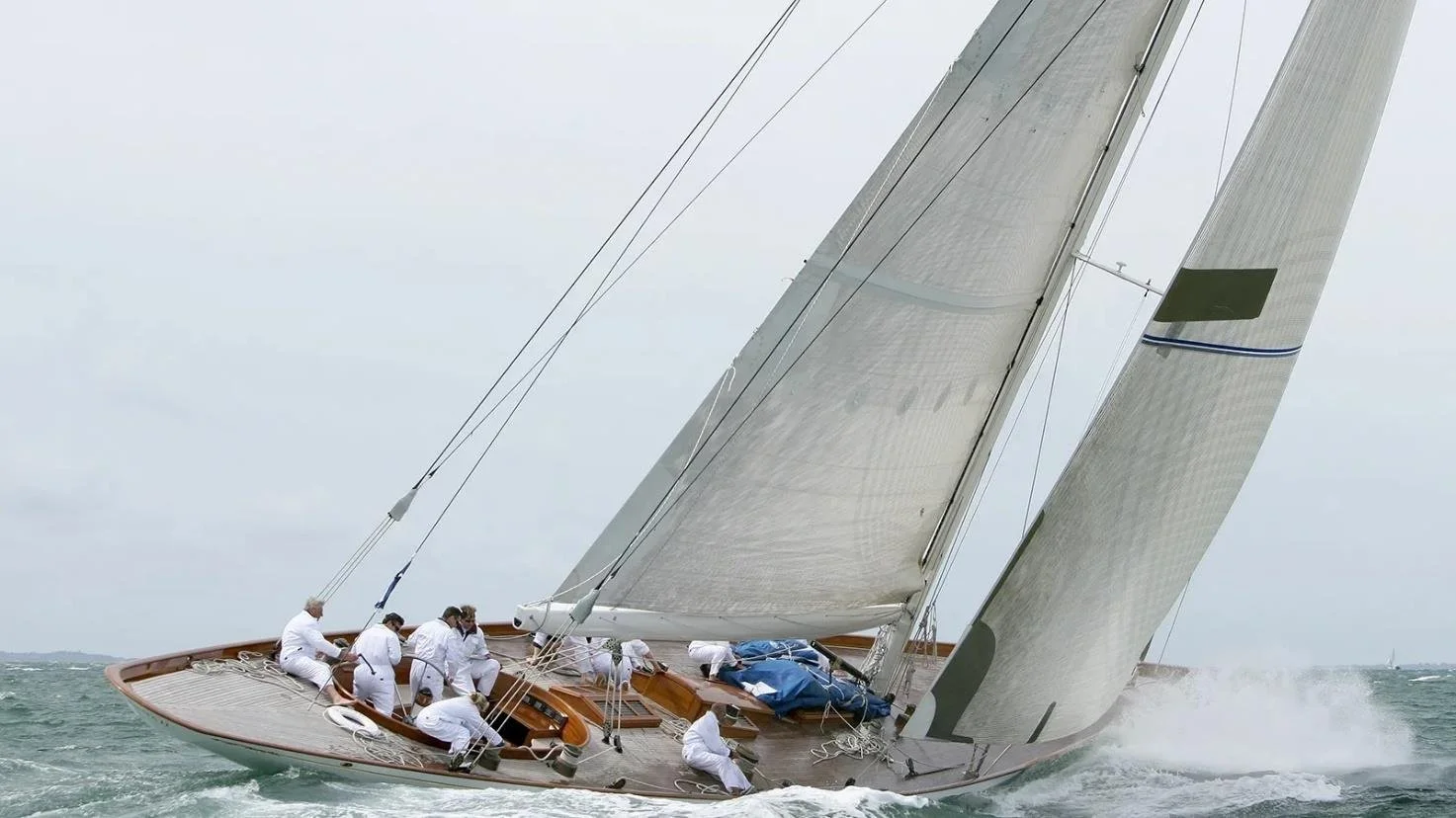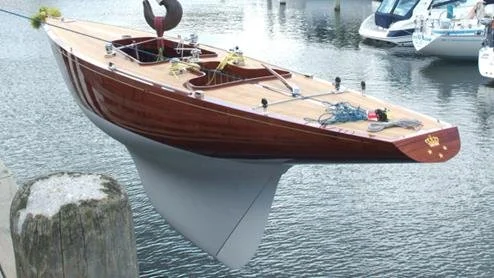Classic Performance - Part V
In this fifth and final piece by Ian Ward we discuss modern classics
Traditional Classics
Many traditional classic yachts are well known for their wonderful, balanced sailing qualities. Being quite narrow hulls with long keels, they are typically highly directionally stable and tend to develop little helm as they heel due to their fine hulls. As a result, they may be slow to turn, but are often a pleasure to sail, especially upwind in a decent breeze. They may even be able to ‘free sail’ if the hull is well-balanced.
Today, there is also a trend towards building and racing ‘modern classic’ yachts. Some of which are ‘contemporary classics’, newly built, faithful reproductions of the original hull design, often with modern materials and construction techniques. Along with fine timber finishes, modern winches, furlers and even carbon masts, they are certainly beautiful and practical.
Modern Classics
While some ‘modern classics’ are newly constructed replicas of original designs, most are ‘modernised’ designs with a much lighter displacement than their predecessors, sporting deep fin keels with bulbs to hold up their relatively larger sail area, thereby making them potentially much faster for their overall length. These designs typically feature sweeping deck lines and overhangs resembling those of previous generations, which most certainly produce a wonderful looking craft on the water.
Modern Classic with fin keel and spade rudder
Their fin keels and spade rudders significantly reduce wetted surface area, improving their light air performance and make these yachts much more manoeuvrable, which are significant benefits. Simpler rigs, with furling self-tacking jibs and bow set spinnakers also make these craft rather easy and convenient to sail.
The effect of introducing a fin keel however, also makes these boats directionally unstable and therefore unable to sail ‘hands free’ or ‘free sail’. The spade rudder is no longer self-centring which also significantly alters the steering and turning behaviour when compared with original classic yacht designs. Yet other manufacturers provide a ‘traditional look’ of classic timber finishes to a modern truncated hull with wide stern and even twin rudders.
Many of these designs also feature broader ‘more powerful’ stern sections in line with modern trends, which are typically not so well balanced. They tend to develop weather helm as they heel, even subjecting these yachts to potential broaching. As a result, adjustable mainsheet travellers and backstays are often required to adjust the rig, to help maintain control in more challenging conditions.
As a result, the overall handling and performance of some ‘modern classics’ can be quite different when compared with their traditional predecessors. This produces quite a different quality of sailing experience, which perhaps explains some of the scepticism of traditionalists.
A Design Challenge
Modernising a classic design simply by making it lighter and attaching a fin keel does not necessarily just make the boat ‘faster and more responsive’, it can also perhaps unintentionally alter several fundamental handling characteristics, not all of which may be considered improvements. Perhaps this is why there also remains a fascination for restoring the original classic yachts and even constructing new “contemporary” classics, built to the original design, rather than changing the underwater hull design altogether.
It appears that there is currently a clear choice for designers between either ‘modern’ or ‘traditional’ hull designs, which produce quite different handling characteristics. This provides a significant challenge for designers to adopt the significant benefits of both hull types, without inheriting any of the poor handling qualities.
The opportunity is for ‘modern classic’ yachts to combine their graceful lines with light, stiff and durable construction, easily handled furling and reefing systems and adjustable rigs. The hull, may be of significantly lighter displacement and reduced surface area with a deeper keel offering increased righting moment. All these features should help produce a faster, more easily handled yacht. Ideally it should also possess a light, responsive helm and turn quickly and easily with a self-centring rudder and even steer controllably in reverse into a marina under power.
Ideally, a yacht should track straight under sail, even when the helm is released. It should not gather weather helm as the boat heels, nor gripe or broach, even when pressed hard. There should be no need to ease the main or dump the traveller in gusts, as it should be able to ‘free sail’, helm unattended through lifts, knocks, gusts and lulls by itself, providing the skipper and crew with a wonderful, stress free and safe sailing experience.
Clearly, it is not currently possible to combine all these features in one boat, as there are several conflicting fundamental issues related to the location of CLP and LCG and the movement of CLR of the hull as it heels, resulting in misalignment of CE and CLR. It will be interesting to see if designers can resolve these issues in the future to create a perfect balance of these qualities.
One possibility could be to introduce a device which allows the skipper to choose the desired behaviour of the boat. For instance, a pivoting skeg ahead of the rudder which could be locked on centreline to provide directional stability, free sailing qualities and a self-centring helm.
The pivoting skeg could then be released, to turn with the rudder, providing directional instability, thereby allowing efficient turning for excellent manoeuvrability and even steering backwards. It may even be possible to overbalance the skeg, so it counters the turning forces of the rudder when linked, providing an exceptionally light and responsive helm.
In Summary
This five-part series explores how the rather arbitrary yacht racing rules and rating systems over the past 150 years have significantly influenced the shape, character, and behaviour of yachts. Perversely, modern rating and handicap rules tend to penalise ‘classic yachts’ for being too fast, so they do not often win mixed fleet races on handicap and hence are perhaps considered outdated, despite often being faster around the course for their size.
Handicapping systems such as IRC. PHRF and PHS tend to be design agnostic, predicting or measuring the actual performance of individual boats. As a result, popular evaluation of the performance differences between various designs appears to have been reduced rather simplistically to ‘speed for overall length’, resulting in the current trend to truncated, wide light hulls with relatively large sail area.
Anecdotes of the performance and behaviour of classic yachts against modern designs indicate they can often outperform the modern designs when compared on the basis of their fundamental proportions of displacement, waterline length and sail area. Classic yachts are also typically significantly more directionally stable and better balanced than newer designs. There are also differences in the steering, turning, and handling behaviour of classic and modern designs which greatly affect the quality of the sailing experience. The fundamental cause of these differences is related to the relative positions of CLP and LCG.
Rig and hull balance are affected by the position of CLR, which can move within the hull as it heels. In poorly balanced wedge-shaped hulls, CLR moves forward with heel, producing a broaching moment which results in weather helm and can lead to broaching, even upwind. As classic yachts are typically well-balanced, they tend to be well behaved and may even be able to ‘free sail’ with the helm unattended.
It is concluded that classic yachts often still perform as well as their modern counterparts and can be much better behaved. A challenge for designers is it to combine the best features of both modern and classic yachts, while retaining their wonderful lines and improving their overall performance.
The intention of this series of articles has been to outline the differences in behaviour and performance between classic and modern designs, understand the underlying fundamental causes of these differences and challenge designers of modern classics to reproduce the best qualities of both modern and classic designs without inheriting any vices.
Ian Ward
Sydney, Australia







